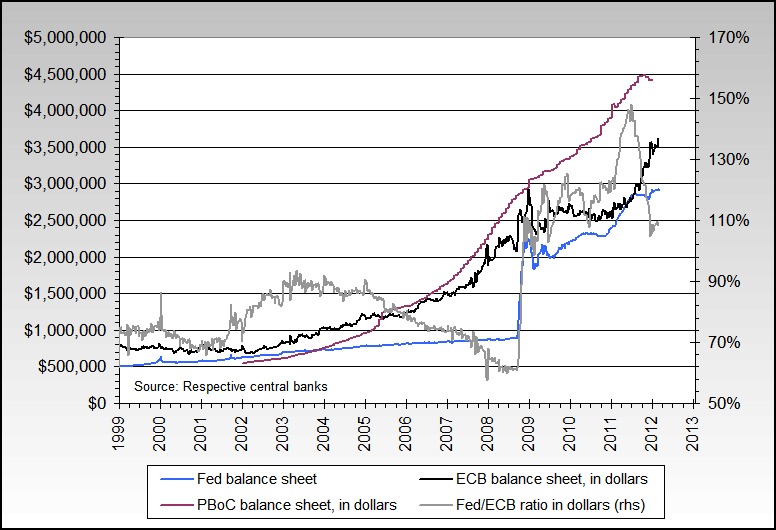Could The Fed s Balance Sheet Be The Mother of All Bubbles
Post on: 16 Март, 2015 No Comment

Almost every major stock market advance in the past 100 years has lead to some type of stock market bubble. The last great bubble was formed in 2007, this bubble formed primarily in the credit and housing sectors. At that time, people were flipping homes, borrowing from banks without showing documentation of income, and tapping the equity out of their house like an ATM that giving out free money. What was the cause of this latest and greatest bubble? Greed was the real cause, but it was easy money by the Federal Reserve and almost every bank on the planet that was the root of the problem.
Now it is important to understand why the Federal Reserve implemented an easy money policy in the first place. Well, in 2000 there was another market bubble that burst and it was in the technology sector. Do you remember in the late 1990s when every company in the world was adding a dot com to the end of there name to try and boost there share price. There where stocks that made no money at all that soared to new heights. Does anyone remember the Globe.com, CMGI, and countless others that traded to explosive price levels. The Globe.com traded from $9.00 to $90.00 on the day of its IPO. That bubble lasted longer than most people expected, but it did end very ugly. In fact, the NASDAQ Composite is the only major stock average that has still not made new highs from its 2000 peak of $5132.52. Today, the NASDAQ Composite trades at a $3691.50.
These days there are many unconventional methods being used by the Federal Reserve in order to try and stimulate the economy. In the past, the central bank would just lower interest rates and that would make money more available. Remember, the former head of the Federal Reserve just lowered the fed funds rate to simply 1.0 percent in 2001. This was certainly one of the catalysts for the great housing and credit bubble once interest rates started to rise. Today, the current Federal Chairman Ben Bernanke has moved interest rates to basically zero percent. He made this move to lower the fed funds rate in December 2008 and it is still there to this day. In September 2012, Chairman Bernanke also decided to purchase $85 billion a month worth of U.S. Treasuries and mortgage backed securities. This is a lot of money printing or liquidity being thrown at the stock market, hence the affect has been new all time highs in the Dow Jones Industrial Average and most other major stock indexes. Is this move higher in stocks another bubble in the making? Well, as long as the central bank does not cut QE-3 or raise interest rates everything looks great for the stock market at this time.
Currently, the Federal Reserve has about $4 trillion on its balance sheet. This is money that the central bank has printed to buy these securities. Eventually, the central bank will need to unwind there balance sheet and that $4 trillion at the central bank will need to be put back in the system. Theoretically, the central bank just creates this money out of this air, so could the great unwind of $4 trillion cause dramatic inflation? Perhaps it will, or perhaps the central bank will simply never unwind it and just continue to print more money to support asset prices. Can the stock market reap what it dont sow, or could the Feds balance sheet of $4 trillion and counting be the mother of all bubbles? That is the great question that most economists should be asking themselves.
The irony here is that very few people if any at the central bank actually predicted the 2000, and 2008 stock market bubbles. These powerful people at the central bank have MBAs, mathematicians, statisticians, PhD’s and other prominent title holders at there disposal. Maybe this time is different, but everything happens in threes from what we have seen in life. Could the third bubble actually be at the Federal Reserve itself this time around? We shall see soon enough.














